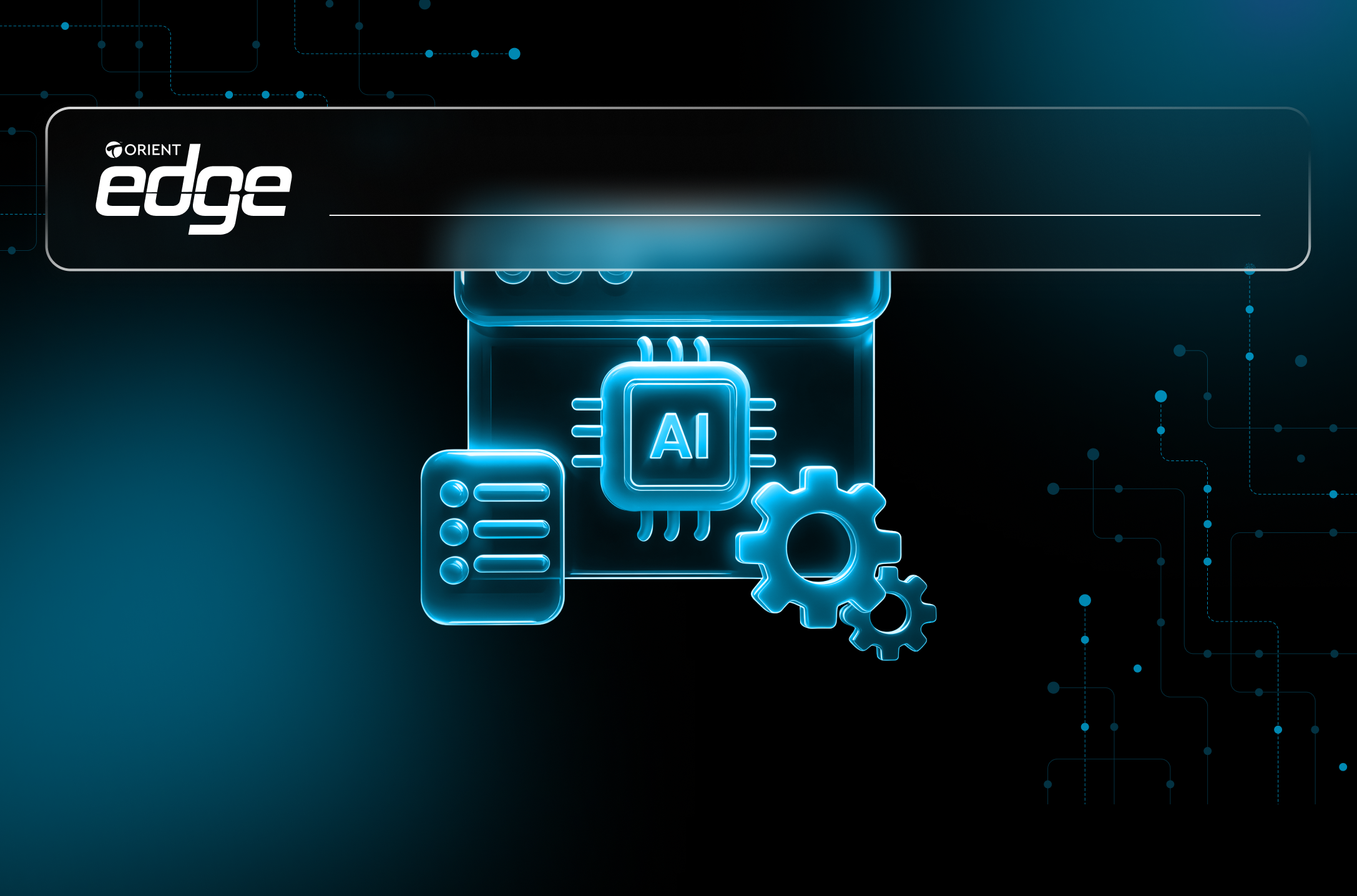
Offerings
IT Infrastructure & Application Services
IT Infrastructure solutions

In the rapidly evolving enterprise technology landscape, traditional ITservice desks are no longer enough. Instead of merely responding to issues,modern organisations must proactively drive business value through IT servicemanagement (ITSM). With the ascent of digital transformation, the introductionof agentic AI, and growing pressure on IT teams to deliver strategic outcomes,the time is now to rethink service management.
At Orient Edge, we see ITSM not as a cost centre, but as a strategicenabler. Below, we explore how AI-powered service management, automationin IT support, and next-gen frameworks are shaping the future.
Digital transformation efforts increasingly place ITSM at the core ofbusiness performance. Organisations are now looking beyond fix-it-when-brokenmodels toward continuous improvement, efficiency, and alignment with businessgoals. In this shift, IT Service Management becomes more than a ticketingengine — it becomes a platform for value creation, requiring strong AIgovernance, intelligent processes, and business-aligned KPIs.
Legacy service desks struggle when transformation demands scale,agility, and cost-efficiency. According to industry data, over 40% of serviceteams cite slow incident resolution and reactive workflows as barriers todigital maturity.
In 2025, the winners will be the teams that embed AI in ITSM,leverage ITSM automation, and adopt agentic AI to drivemeaningful outcomes.
The first wave of AI in ITSM focused on simple virtual agents andchatbots. Today, we’re witnessing the rise of agentic AI, autonomoussystems that can reason, plan, and execute workflows across service management,asset management and support.
For example:
· Automatic ticket triage that categorises, prioritises and assignsincidents without manual intervention.
· Intelligent workflow agents that manage onboarding, softwareprovisioning and multi-team coordination with minimal human oversight.
· Predictive maintenance models in support systems that detectinfrastructure degradation and trigger proactive resolution before end-usersare impacted.
These capabilities redefine how IT support operates, reducing mean timeto resolution (MTTR), lifting employee experience, and freeing up ITprofessionals for strategic initiatives.
The cornerstone of modernization: enabling service teams to do more withless. Automated workflows handle routine tasks, password resets, deviceprovisioning, knowledge-base responses at scale. With automation in place, ITteams can shift from operational firefighting to strategic service delivery.
Artificial intelligence enhances service management with capabilitieslike natural-language processing (NLP), predictive analytics, and generativeAI. These tools enhance self-service portals, provide dynamic routing androot-cause detection, and optimise incident resolution end-to-end.
Here, we speak of the broader ecosystem: merging AI, automation andservice management into one intelligent platform. It’s not just about supporttickets, it’s about continuous service improvement, operational resilience andbusiness agility.
Modern ITSM must shift from traditional metrics (SLAs) to businessoutcomes. Service management must tie to metrics like time-to-market, customersatisfaction, cost-reduction and digital growth.
With great power comes great responsibility. As organisations adoptagentic AI and AI-driven workflows, robust governance frameworks, coveringethics, compliance, transparency and risk are critical.
Several converging factors make 2025 pivotal for ITSM and servicemanagement:
· The explosion of hybrid-cloud and distributed workforce models demandsnew support paradigms.
· Enterprises are under pressure to deliver faster innovation with tighterbudgets, pushing service teams to adopt AI and automation.
· Board-level scrutiny of IT operations, resilience and servicereliability is increasing. ITSM must become a strategic tool, not just aback-office function.
In this context, AI-powered service management becomes the bridgebetween transformation ambition and execution reality.
Begin by defining what success looks like, faster resolutions, higheremployee satisfaction, reduced cost, improved agility.
Start with a focused pilot, maybe a high-volume support queue oronboarding workflow. Measure impact, build momentum, and scale.
Ensure ITSM becomes part of enterprise strategy. Tie service metrics tobusiness KPIs and enable cross-functional ownership between IT, HR, operationsand business teams.
As you scale AI and automation, build governance around data,transparency, and risk. This reinforces trust and adoption across theorganisation.
Leverage analytics and feedback loops. With AI-driven insights, ITSMbecomes not just efficient, but adaptive, predictive and resilient.
At Orient, our view is clear: ITSM is no longer simply about closingtickets, it’s about enabling business acceleration. Whether you’re consideringenhancing your service desk with AI service management, transformingoperations through automation in ITSM, or embedding AI governanceinto every workflow, the right mindset and roadmap will make all thedifference.
If you’re ready to accelerate your ITSM digital transformation in 2025,focus on aligning technology, people and process, with AI and automation asenablers, not ends in themselves.
Conclusion
The future of IT servicemanagement lies in stepping away from reaction and moving toward anticipation,from tasks to outcomes. With AI-powered service management, automation in ITsupport, and strong governance in place, organisations can turn service desksinto strategic hubs of innovation. In 2025 and beyond, ITSM will be a forcemultiplier, enabling enterprises to deliver faster, smarter and with purpose.